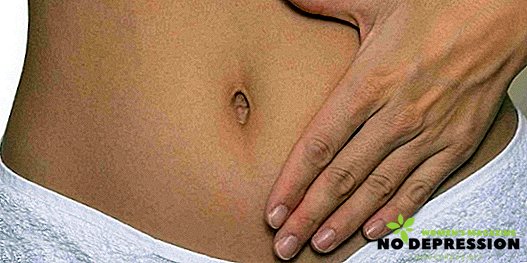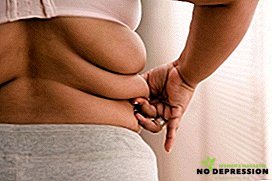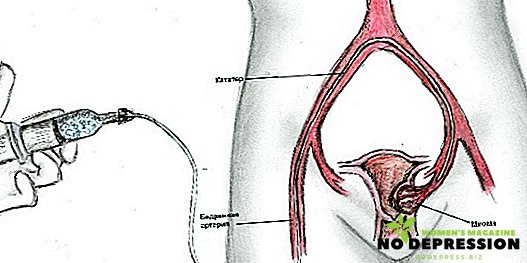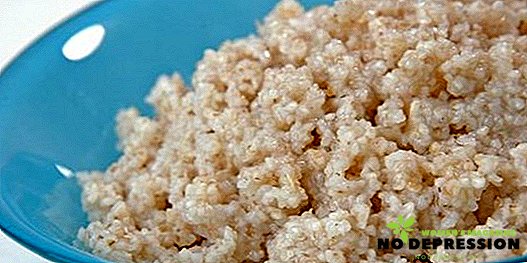Uterine fibroids - a common gynecological disease, which is most common in the reproductive age. Currently, there are many approaches to the treatment of this problem.
The choice of a tactic depends on several factors: whether a woman wants to preserve her reproductive function, the rate of disease progression, etc.

Uterine fibroids - what it is, what types it is
Myoma of the uterus is called a benign tumor, which consists of smooth muscle cells located in a chaotic manner. If the number of connective tissue cells prevails in the tumor tissue, the formation may be called fibromyomas, if the smooth muscle cells are called leiomyomas.
It is worth noting that myoma is almost never malignant. However, the disease can be accompanied by very unpleasant consequences, reducing the quality of life.
Consider the types of uterine fibroids. The location of myoma node is distinguished:
- subserous;
- intramural;
- submucous;
- intermuscular;
- myoma of the cervix.
Under the subserous type of uterine fibroids understand the tumor formation, which is located on the outer side of the body. It extends into the pelvic cavity. In the early stages of development, it usually does not cause anxiety to a woman and can be detected by chance, for example, during an ultrasound examination.
Only when a tumor reaches a certain size, at which the organs located next to the uterus (bladder, rectum) begin to compress, can a woman complain of frequent urination, difficulty in defecation.

The intramural arrangement of uterine fibroids (among the bundles of muscle fibers of the middle layer of the uterus) usually entails the development of a violent clinical picture. Women may notice gradually increasing in the volume of the stomach, menstrual irregularities. Frequent is pain, a feeling of pressure in the pelvis.
The submucous or submucosal location of the tumor is usually manifested by a vivid clinical picture (abundant and long-lasting menstruation), which causes a woman to consult a specialist.
The defeat of the cervix is observed in fairly rare cases. Usually the disease has erased symptoms. May manifest as infertility, miscarriage.
Depending on the number of myoma nodes, there are:
- single tumor;
- multiple tumor.

Factors contributing to the formation of tumors
Gynecologists identify the following risk factors for this disease:
- genetic predisposition;
- hormonal disorders;
- damage to the uterus due to mechanical stress.
Genetics and uterine fibroids
Women suffering from uterine fibroids usually report the presence of this disease in their female relatives (mothers, grandmothers).
It should be noted that heredity is only a predisposing factor.
Hormonal imbalance
Hormones are substances that have a high biological activity, are produced in the body by the endocrine glands. Since hormones can have an effect in very low doses, any change in their concentration in the blood affects the functioning of the internal organs.
Estrogens and progesterone are particularly affected by the uterus. During the menstrual cycle, the production of these hormones fluctuates. In the first phase of the cycle, estrogen dominates, in the second, progesterone.

Under the influence of hormones, the mucous layer of the uterus grows in the first phase (preparation for pregnancy), and its rejection in the second. Excessive amounts of these hormones can lead to a tumor process.
Causes of hormonal failure:
- Ovarian disease;
- Obesity. Adipose tissue has hormonal activity. In violation of fat metabolism, an increased concentration of sex hormones is observed;
- Abortion;
- Early or late onset of menstruation;

- A short interval between births (up to two years);
- Late onset of first pregnancy;
- Lack of breastfeeding;
- Irregular sex life.
Changing hormonal levels characteristic of women who are in child-bearing age. At the onset of menopause myoma nodes disappear or decrease in size.
Damage to the uterus due to mechanical stress
Mechanical action of various kinds damages the organ mucosa, as a result of a violation of cell regeneration (recovery), fibroids can develop.
The reasons:
- abortions;
- RDV (separate diagnostic curettage);
- Surgery on the uterus.
Symptoms and signs
The location of myoma nodes plays a crucial role in the manifestation of the disease. It may be asymptomatic or have a vivid clinical picture.
Most often women complain about:
- prolonged menstruation with profuse blood loss;
- enlarged abdomen;
- increased urination;
- difficulty defecation;
- pain syndrome.

Excessive blood loss during menstruation can lead to the development of anemia (lower hemoglobin levels), which is a serious complication of this disease. If, as a result of conservative treatment, it is not possible to achieve a normal level of hemoglobin, anemia should be considered as an indication for surgical intervention up to the removal of an organ.
An increase in the abdomen gives the woman not only physical but also mental discomfort. The abdomen may increase at a slow or a fast pace.
Gynecologists characterize the growth of the uterus in accordance with the weeks of pregnancy (that is, the size of the uterus corresponds to 7, 15 weeks of pregnancy, and so on).
The growing node has a squeezing effect on the organs located near the uterus. A node reaching the bladder will irritate its walls and cause increased urge to urinate.
Myoma, located near the rectum upon reaching a certain size, will cause a narrowing of the lumen of the adjacent organ. A woman will complain of constipation.
The uterus has a rich network of nerve fibers, growing fibroids causes constant irritation of the receptor apparatus of the uterus, therefore, painful sensations.
Uterine fibroids with menopause: symptoms and treatment
In the period of menopause, the production of female sex hormones gradually decreases. As a rule, myoma nodes are subject to regression (decrease) or disappear altogether.
Women of menopausal age, suffering from uterine fibroids, may complain of uterine bleeding (bleeding), pain of varying degrees of intensity, difficulty defecation, and frequent urination.
Regression is achieved by:
- Carefully selected hormone therapy.
- FUS ablation fibroids. This method is widely used, since there are practically no contraindications to it, the risk of complications is minimal. The essence of the method in the application of ultrasound on the affected tissue. As a result, necrosis of the myoma node occurs. Indisputable advantages of choosing this method are the preservation of healthy tissue, non-invasiveness (surgical instruments are not introduced into the body), the absence of pain during the procedure, the minimum risk of complications. The method is effective in the treatment of fibroids, so the connective tissue is subject to heating to the required temperatures.

- Surgical. The volume of surgery at menopausal age provides for the removal of the uterus. It is worth noting that this method of treatment is radical, but is associated with the presence of the risk of complications. Specialists are gradually moving away from him. It is recommended for women who have developed anemia against the background of uterine fibroids, with the failure of other treatments.
Uterine fibroids during pregnancy
The dangers of uterine fibroids during pregnancy:
- development of placental insufficiency (changes in the structural and functional properties of the placenta, which can lead to impaired fetal development);
- the threat of miscarriage on various terms.
Also, this location is unfavorable in that premature detachment of the placenta may occur, which requires delivery for health reasons.
 A terrible complication is necrosis (destruction) of the myoma node, which can provoke pregnancy in its various periods. This condition requires urgent specialized assistance.
A terrible complication is necrosis (destruction) of the myoma node, which can provoke pregnancy in its various periods. This condition requires urgent specialized assistance.
With a sufficiently large knot size, the uterus cavity is deformed, the development of the fetus is impaired. Babies can be born with low growth and weight.
Uterine fibroids are not indications for abortion. This diagnosis requires additional examinations, which are prescribed by the doctor.
If uterine fibroids have small dimensions, then the period of gestation can be no different from that of a healthy woman.
Treatment methods
Cervical fibroids are the most rare of all other types of diseases. Usually does not manifest itself. May be detected by chance or in the diagnosis of infertility. This type of fibroids interferes with pregnancy and gestation.
Medical tactics are presented in several directions:
- Conservative;
- Surgical;
- Carrying out uterine artery embolization.
The conservative method involves hormone therapy. Duration depends on the stage of the disease, pregnancy planning. Hormone therapy can regress or reduce the rate of increase in uterine fibroids.

If conservative therapy fails, the next stage of treatment is the surgical method. As a result, a section of tumor tissue (myomectomy) is removed. The operation is performed by vaginal access.
Is organ-preserving, in the future a woman can conceive and carry out a child. Significant disadvantages include a relatively high risk of relapse (growth of fibroids in the same place).
Depending on the age of the woman, pregnancy planning, the characteristics of the nodes and the presence of complications, the doctor may suggest treatment by radical surgery - hysterectomy.
Hysterectomy - removal of the uterus. The disadvantage of this method is the development of hormonal failure.
The essence of the embolization method is that the blood flow to myomatous nodes decreases, which leads to a gradual reduction in their size.
Treatment of folk remedies
Folk remedies include the use of hemlock, celandine, boron uterus. These herbs have an antitumor effect. Before carrying out phytotherapy consultation of the expert is recommended.

Complications and consequences
The most common complications include:
- anemia;
- necrosis of myoma node;
- birth of myoma node;
- uterine bleeding;
- torsion of the tumor.
Fibroids can cause infertility and miscarriage.
Is there any prevention?
Stable hormones, the absence of mechanical injuries to the uterine cavity significantly reduce the risk of myoma nodes.
Regular sex life, pregnancy, refusal of abortion, breastfeeding, timely treatment of diseases of the endocrine glands are preventive measures of this hormone-dependent tumor disease.

Is it possible to play sports with uterine myoma
Sports are not prohibited in this disease, but physical exertion should be moderate. Swimming, yoga, Pilates are optimal for uterine myoma. One has to avoid lifting weights. The advice of a specialist is recommended, who will give the necessary recommendations for the permissible load.
Is it possible to sunbathe
Sunbathing with this disease is not recommended.
The sun's rays cause a stimulating effect on the tumor cells, which will lead to the growth of myoma nodes.
Women reviews
Five years ago, myoma of the uterus was detected by ultrasound. Planned pregnancy. Offered myomectomy surgery (removed the node under anesthesia). After 5 months she got pregnant and gave birth to a healthy boy! Doctors say that they can again grow a knot in the same place. I pass the survey every six months, everything has been in order for 1.5 years now.
Inga, 29 years old, Kaliningrad
Diagnosed with uterine fibroids 3 years ago, there were abundant periods. On the ultrasound node. The gynecologist prescribed hormones, I have been drinking for six months. On examination showed a decrease in the node. I do not plan on getting pregnant yet, but if this goes on like this, the doctor said that I could get pregnant without any problems.
Anastasia, 24 years old, Moscow
In 30 years, was diagnosed with uterine fibroids. The hemoglobin index at that time was 80 g / l. Long took hormones. Hemoglobin levels never rose. I suffered from abdominal pain, menstruation went for a week in large quantities. It was decided to remove the uterus, because she had already given birth to two children, the pain was becoming unbearable. Surgery under general anesthesia. Recovered for a long time. She was afraid that will affect the intimate life. But my fears were in vain.
Irina, 56 years old, Samara
Also about uterine myoma can be found in the following video.














